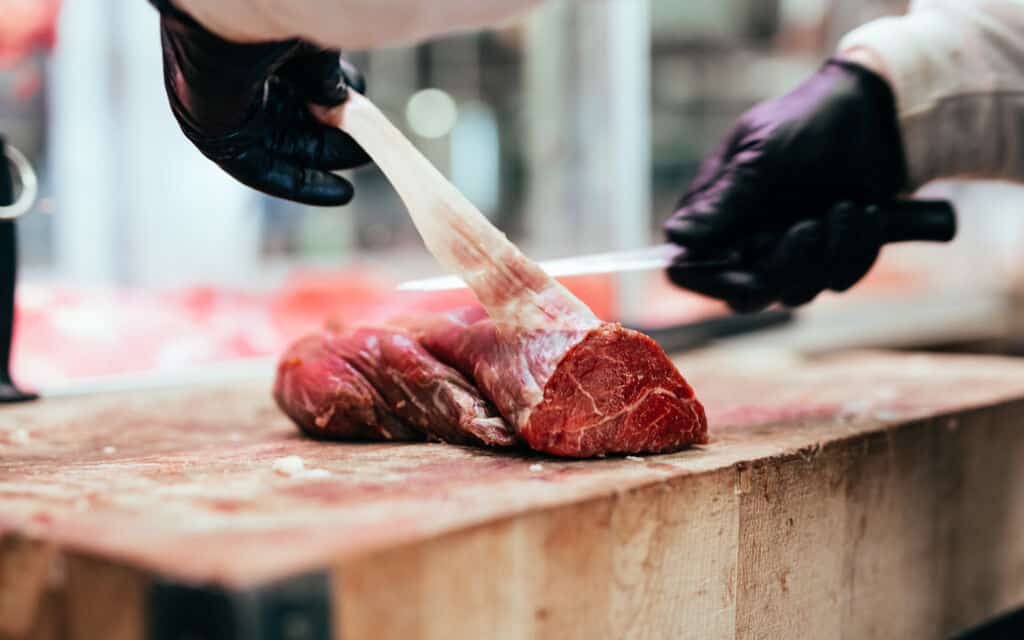
The meat rendering process is not just an essential part of the food industry, but also a significant contributor to the global economy. However, it isn’t without its challenges, and one of the prominent issues faced is metal contamination. Read on to learn more about the costs of metal contamination during the meat rendering process.
Definition of Meat Rendering
Meat rendering fundamentally refers to the procedure where animal tissue, which includes scraps, bones, excess fat, and offal, is converted into more usable forms. These “utilizable forms” consist of components like lard, tallow, and edible oils. Meat rendering captures the essence of resource optimization by ensuring that no part of the animal goes to waste.
In more technical parlance, rendering can be defined as a process that uses heat to separate fat from water and protein in animal tissues. It is a continuous cooking process conducted under controlled temperatures and pressures to ensure food safety and quality. This sets the stage for discussing the specific steps involved in the meat rendering process. It’s essentially the industry’s method of maximizing resource usage, turning potential waste into valuable commodities.
Process of Meat Rendering
The meat rendering process is a series of well-orchestrated steps that transform raw scraps into valued commodities. It primarily consists of three stages:
- Preparation and Grinding: The process starts with collecting and shredding animal tissues into smaller pieces. This is important to increase the surface area for efficient heat penetration.
- Cooking: The ground animal tissues are then exposed to high temperatures in a large cooker for several hours. The heat helps to separate fat from the tissue.
- Pressing and Refining: The cooked tissues are pressed to squeeze out remaining fat. The fat then gets refined to remove impurities, resulting in top-quality edible oils or industrial-grade fats like tallow and lard.
Thus, rendering is inherently a sustainable practice that mills value from waste. However, it’s not without its challenges—one of the most pressing being metal contamination.
Learn about the importance of HACCP certification and how it improves food safety for manufacturers.
The Issue of Metal Contamination in Meat Rendering
The process of meat rendering, while highly beneficial in enabling the re-utilization of otherwise wasted resources, faces a challenging issue related to metal contamination. This aspect relates to the inadvertent presence of metals within the raw materials being subjected to the rendering process. Unfortunately, some of these metals can pose significant risks to both animal and human health, in addition to impacting the overall quality of the rendered products. Let’s aim to understand this issue in more depth, starting with the causes of metal contamination in meat rendering.
Causes of Metal Contamination in Meat Rendering
Metal contamination in rendered meat can arise from multiple sources, prominently due to three main factors. First, metals can be introduced during the supply chain, from farming to slaughtering. Second, the rendering equipment could contribute to metal contamination. Finally, poor management of slaughter waste materials is also a notable causal factor.
- Farming and Slaughter: For instance, animals might ingest metals from contaminated feeds, drinking water, or grazing ground, eventually concentrating them in their bodies, or from controlled release (drench) capsules used in ovine framing remaining in the meat. These metals can then end up in the rendered products. At the slaughter level, metal contamination can occur from equipment or tools used during the process.
- Rendering Equipment: Metal parts/shavings from the hammer mill, grinders, knives, or other machinery used during the rendering process can accidentally end up in the final product, contributing to the overall metal contaminant load.
- Waste Management: Poor handling and disposal of slaughter waste products can also introduce metals into the rendered products. This could occur if waste containers or disposal units contaminated with heavy metals are used during the disposal process.
The problems stemming from metal contamination go beyond mere product impurities. In fact, the presence of toxic metals in rendered products can have serious implications on animal and human health.
Effects of Metal Contamination on Product Quality
Metal contaminants in rendered products can markedly affect the product quality which can have negative impacts on meat renderers and their customers.
One of the impacts is the marketability and consumer acceptance of the products. Given the potential health risks associated with metal contamination, regulatory agencies worldwide have set strict maximum limits for metal levels in food products. Rendered products that exceed these limits are deemed unfit for consumption and the renderer’s customers, for example, pet food processors, can turn away the product and the product can be quarantined. Furthermore, any perceived health risks could deter consumers from purchasing these products, even when they comply with regulatory standards, thereby reducing the overall product demand and consequently, revenue.
This detailed examination presents a clear insight into the issue of metal contamination in meat rendering, highlighting the need for efficient methods to detect and remove such contaminants to ensure product safety, quality, and compliance with standards.
Increased Production Costs
Metal contamination is not just a health risk; it also has severe implications for the financial health of businesses in the meat rendering industry. Metals present in materials can cause extensive damage to the machinery utilized in the rendering process.
This damage can lead to increased production costs in several ways:
- Repair and maintenance: Metal contamination can lead to frequent machinery breakdowns. This means businesses have to invest more in repairs and maintenance, thus increasing operational costs.
- Replacement: In extreme cases, the damage caused can be so severe that entire pieces of machinery have to be replaced, leading to high capital expenditure.
- Downtime: Machinery breakdowns can lead to substantial downtime, which translates to lower production volumes and, consequently, lower revenues.
Key Takeaways
At Magnattack®, we’ve been committed to enhancing food safety and reducing the risk of metal contamination since 1969. With our highly effective magnetic separation systems, we help safeguard your brand reputation, prevent equipment damage, and improve product purity.
The Mag-Ram® Self-Cleaning Magnet is a game-changer for the meat and bone meal processing industry. With its self-cleaning and programmable features, it saves valuable time and effort for operators, increasing efficiency like never before. Contact us today to learn more about the Mag-Ram®.
